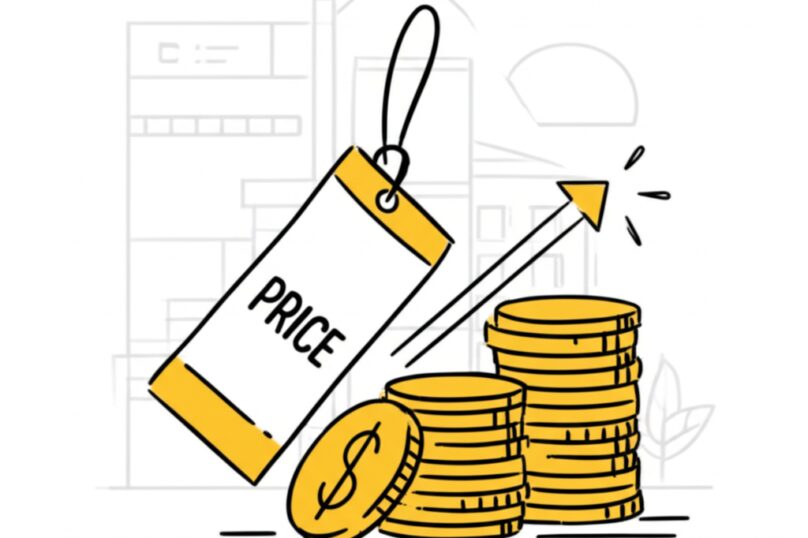The power of Pricing & Profitability

Hello Business Builders!
Today, let’s talk about two super important words for your business: Pricing and Profitability. Many people think pricing is just about putting a number on your product or service. But it’s much, much more! It’s like a secret power that can make your business strong or weak. And profitability? That’s about how much money you actually keep after all your costs. Let’s make these simple and see how businesses in Tamil Nadu are rocking it!
Why Pricing Matters (More Than You Think!)
Imagine you have a shop selling delicious Sambar rice. If you price it too low, you might sell a lot, but you won’t make enough money to cover your costs and grow. If you price it too high, customers might not buy from you. Finding the right price is like finding the perfect balance for your business to shine.
Good pricing helps you:
- Make more profit from each sale.
- Show customers the value of what you offer.
- Stand out from your competitors.
Understanding Profitability (It’s Not Just About Sales!)
Sales are great, but profit is what truly matters. Think of it this way: a cinema in Chennai might sell thousands of tickets (lots of sales!), but if the cost of running the cinema (rent, electricity, staff, movie rights) is very high, their profit might be small. Profit is what’s left after you pay for everything. It’s the money you can use to grow your business, pay yourself, or invest.
Simple Pricing Strategies for Your Business
Here are some easy ways to think about pricing, inspired by what we’ve seen work in Tamil Nadu:
1. Cost-Plus Pricing (The Simple Start)
This is the easiest. You find out how much it costs to make or offer your product/service, and then you add a percentage on top for your profit.
Example: A small bakery called “Aromas Bakery” in Madurai calculates that a special plum cake costs ₹100 to make. They want to make 30% profit, so they price it at ₹130. Simple, right?
2. Value-Based Pricing (The Smart Growth)
Here, you price your product based on how much value or benefit the customer gets from it, not just your cost.
Example: “EduGenius”, a coaching center in Coimbatore, helps students score very high marks in competitive exams. They know their coaching can help students get into top colleges and earn a good salary later. So, they charge a higher fee because the value they offer (a bright future) is huge, even if their direct costs aren’t that high.
3. Competitive Pricing (The Market Aware)
You look at what your competitors are charging and price your items similarly, or slightly above/below, based on what makes sense for your business.
Example: When “Mobile Mart” in Anna Salai, Chennai, sells a new smartphone, they check what other big stores are selling it for. They might price it exactly the same, or offer a special bundle deal (like a free screen protector) to stand out at a similar price.
Real-Life Examples We’ve Seen Work in Tamil Nadu
We’ve helped many businesses understand and use these ideas. Here are a few:
1. “Saravana Silks” (Dummy Name) – Kanchipuram:
This traditional silk saree shop in Kanchipuram faced tough competition. Instead of lowering prices and hurting their quality, we advised them to focus on value-based pricing. They highlighted the unique, hand-woven designs, the purity of silk, and the rich heritage. They even showed customers how much effort goes into making each saree. By communicating this deep value, customers were happy to pay a premium, leading to better profits without losing their brand’s prestige.
2. “Tech Solutions Pvt Ltd” (Dummy Name) – Chennai:
This small IT service company in Chennai provided computer repair and network setup for local businesses. Initially, they had one price for everything. We helped them create different service packages (tiered pricing) – a basic package for quick fixes, a standard package for regular maintenance, and a premium package with 24/7 support. This allowed them to cater to different customer needs and budgets, increasing their overall customer base and significantly boosting their profitability as more clients opted for higher-value packages.
3. “Green Harvest Organics” (Dummy Name) – Erode:
An organic food store in Erode had higher costs because they sourced directly from organic farms. They couldn’t compete on price with regular grocery stores. We worked with them to use value-based pricing by educating customers about the health benefits, the absence of chemicals, and supporting local farmers. They organized small workshops and tasting sessions. Customers, understanding the clear value for their health and the environment, were willing to pay slightly more, making the business profitable and sustainable.
Boosting Your Profitability (Beyond Just Price!)
Once you get pricing right, think about these too:
- Reduce Costs Smartly: Look for ways to spend less without making your product or service worse. Can you buy materials in bulk? Can you make your work process faster?
- Increase Sales Volume (Carefully): While pricing is key, selling more at the right price also boosts profit. This could be through good marketing or great customer service.
- Improve Efficiency: Doing things faster and with less waste means you save money and time, directly increasing your profit.
Remember, pricing and profitability are not just for big companies. Even the smallest shop or service provider in Tamil Nadu can use these ideas to grow stronger and earn more. Start simple, observe, and adjust. Your business will thank you!
To your success,
The Consulting, Marketing & Sales Team
